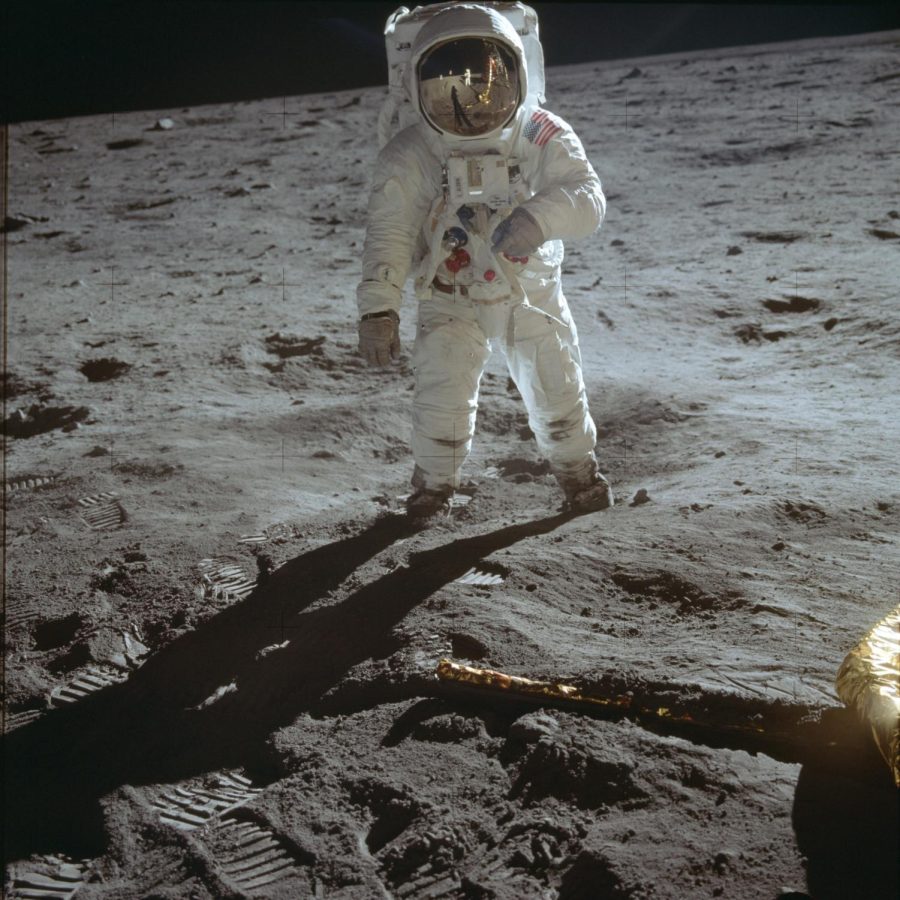Putting man back on the moon might be worth the expense
Astronaut Buzz Aldrin from the Apollo 11 mission on July 20, 1969.
January 16, 2023
The United States’ plan to put man back on the moon is underway; though it is not cheap, it is worth the expense.
NASA’s Artemis mission will put the first woman and first person of color on the moon, according to NASA. This mission also marks the beginning stages of the first step in a long-term plan of sending humans to Mars.
The Artemis mission consists of several unmanned rocket launches from now until 2025 when mankind is expected to set foot on the moon again.
“Using innovative technologies to explore more of the lunar surface than ever before,” NASA said. “We will collaborate with commercial and international partners and establish the first long-term presence on the Moon. Then, we will use what we learn on and around the Moon to take the next giant leap: sending the first astronauts to Mars.”
Artemis is projected to cost $93 billion in total from the start of the mission, in 2012 to 2025, according to the Office of Inspector General.
While it might seem like an outdated headline or too expensive to be worth the effort, there are many benefits to sending mankind back to the moon.
For one, there is still so much unknown about space, and going back to the moon can be the stepping point to learning about what is out there. For example, with today’s advanced technology, astronauts will be able to learn much more than we could decades ago.
In the late 60s, the first astronaut stepped onto the giant rock in the sky and brought pieces back with him. Those rock samples could teach scientists the Earth’s geologic history.
“The face of the Moon preserves nearly every crater in its history. Earth, with its surface, constantly churned and reshaped by plate tectonics, erosion and other elements can hardly say the same. But because of how close the Moon is to Earth, we can look to the unchanging lunar surface to uncover Earth’s past,” NASA explained.
Additionally, learning all that we can about the moon is a stepping stone to Mars.
Mars is roughly 200 times farther from Earth than the moon, so getting astronauts there safely is a larger challenge.
A trip to the moon takes roughly three days, while a trip from Earth to Mars would take an estimated seven months. During an astronaut’s time on the moon, NASA will monitor the effects of limited gravity on the human body and test long-lasting fuel options, according to SPACE.
The Artemis mission will not only be a tremendous learning opportunity but will also promote economic growth.
“Artemis missions enable a growing lunar economy by fueling new industries, supporting job growth, and furthering the demand for a skilled workforce,” NASA said.
Sending mankind back to the moon is inspirational for new generations who didn’t grow up in the same era as The Space Race. New generations can get excited about space, science and technology alongside their parents or grandparents.



